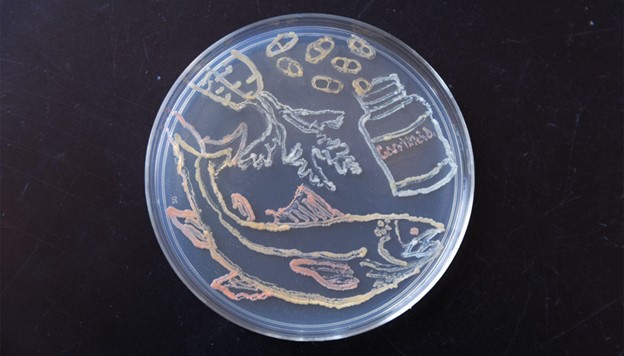Soil Bacteria Link their Life Strategies to Soil Conditions
Assessing the genomes of soil bacteria around the globe, researchers identified three dominant life strategies linked to different types of soil.

The Science
Soil bacteria help regulate the cycling of carbon and nutrients on Earth. Over time, these bacteria have evolved strategies that determine where they live, what they do, and how they deal with a changing environment. However, microbiologists do not fully understand how bacteria’s genes relate to their life strategies. By analyzing large DNA sequencing datasets from around the globe, researchers discovered a new way of categorizing the dominant life strategies of soil bacteria based on their genes. This technique allowed the researchers to link different life strategies with specific climate and soil conditions.
The Impact
Soil bacteria are crucial for planetary health, but they are hard to study because they are so diverse and invisible to the human eye. Researchers used widely available gene sequence data to classify soil bacteria according to their life strategies. This makes it easier for researchers to predict how soils might respond to climate change or to engineer microbes with desirable life strategies. This research also helps solve the longstanding problem in biology of connecting gene sequences to the metabolism of bacteria and other life forms.Summary
The research team categorized the life history strategies of soil bacteria using biological traits derived from metagenomic sequencing data. Next, the researchers used a mathematical technique to group the traits into life history strategies. Three main strategies emerged based on different genetic traits.
Some bacteria display a minimalist strategy, with small genomes that support basic metabolism and growth. Other bacteria have larger genomes, allowing them to extend their metabolic capacities. Bacteria with bigger genomes can react more effectively than bacteria with small genomes to changing environmental conditions and can more effectively recycle nutrients. The most advantageous strategy in a given location depended on variables like soil pH, nitrogen availability, annual precipitation, and seasonality. Minimalist bacteria with small genomes were favored in pH-balanced soils exposed to drought and big seasonal swings, a strategy that the researchers related to stress tolerance. Under dry, variable, and more acidic conditions, the preferred strategy was expanded metabolism allowing for rapid response to environmental changes. These bacteria resembled weedy plants that grow quickly after disturbances like drought or fire. The third major strategy—with expanded metabolism for nutrient cycling—was prominent among bacteria living in consistently wet, acidic soils. These bacteria are analogous to plants that out-compete their neighbors by overtopping them.
Contact
Gabin PitonUniversity of California, Irvine and INRAE
gabin.piton@inrae.fr
Steven Allison
University of California, Irvine
allisons@uci.edu
Funding
This research was funded by the Department of Energy Office of Science, Biological and Environmental Research program, the European Research Council, and the U.K.Biotechnology and Biological Sciences Research Council Institute Strategic Program on Food, Microbiome and Health.
Publications
Piton, G. et al., Life history strategies of soil bacterial communities across global terrestrial biomes. Nature Microbiology 8, 2093–2102 (2023). [DOI: 10.1038/s41564-023-01465-0]
Highlight Categories
Performer: University



